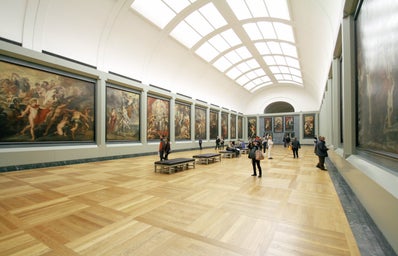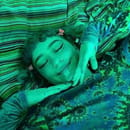Disjointed over two floors and littered with cultural conceptions of the human form, Being Human tackles the question: can art capture what it means to be human? From traditional female nudes reminiscent of classical Greek sculpture to sleek abstractions that convey the impressions and movements of the bodies we possess, as in Bernard Meadows’s Help (Opus 81), the selected material creates a visual disturbance, confusing to audiences who might search for some coherence in its curation.
Arguably, it is the juxtaposition of style, the disorder of wall-texts with their accompanying object alongside the divide between floors and rooms, that work in conjunction to encourage spectators to circulate each object and appreciate it individually. The objects are not displayed in chronological order, and the sheer number of artists on display further lend to the exhibition’s fragmented nature. Although its curatorial chaos might appear as an overall hindrance, I feel that it rather successfully captures the human frame in all its forms; as powerful and beautiful, as disorderly and diseased.
The square layout of the initial room dictated a circular progression through objects, although the irregularity of the sculptural selection on display meant that they could be viewed in any order and from any angle. This contributed to the viewing experience and seemed to nicely accompany the subject matter, as there is no correct way of accurately rendered the human form, and so there is no accurate way of observing it.
Despite the limitations of space, the exhibited sculpture communicated an enormous array of issues. That of innocent beauty and human frailty or post-war anxiety, the rooms crammed with the twisted contortions of bodies in pain alongside emotive busts and smooth impressions in metal.
Dalwood’s Woman Drying Her Feet depicts the unidealized female body in motion. The accompanying text alludes to the influence of Degas’ female bathers, and the visible marks by the hands of the artist suggest the delicate act of touching the body. This particular response to the human body was an overtly sexual one, one that creates the viewer as a voyeur to the private act of bathing, in the very public space of the gallery.
Such a sexualised depiction of the body is interested when directly opposing the work of sculptors involved in the Geometry of Fear, such as Elizabeth Frink – whose experience in the Second World War inspired her sculptural responses to the human body, their physicality tainted with feelings of alienation and vulnerability. Prisoner conveys ideas of frailty. The material is indented with marks as though scars, the nightmarish recreation of a pilot she had seen falling into flames during the war.
By choosing to exhibition these vastly different interpretations of the same subject matter, the room acquires a heightened significance, further questioning what defines the human form, and how we, as humans, are meant to consider it.
Initially, I had thought that spreading the exhibition over two floors would hinder the viewing experience, however found that it allowed the human body to move amongst the museum’s collection. The second room, although sizably smaller than the first, still succeeded in engaging the viewer.
Upon first entrance, confrontation with Yeesookyung’s Translated Vase number 8 provides a vastly modern interpretation of bodily movement in space, the bulbous forms entwined and bubbling upwards from the floor beneath.
Movement is of prime importance to the sculptures occupying the space, the printed text on the wall “movement is the translation of life” embodying the aims of each work – that of the movement of life into art.
La Jeunesse conveys a subtle sense of movement in the slight twist of the torso, whilst Imran Qureshi’s Colours of my Heart depicts a more visceral and violent energy through its splatters of red paint and thick crimson drips – the human body inverted. Breska’s The Wrestler conveys the artist’s fascination with movement and wrestling clubs between 1912-13 and the sculpture itself is in an act of movement, yet static in its medium
Interestingly, the second room also contained several examples of illustration and a video installation displaying a human trapped in the box of the television. Despite being an exhibition of sculpture, the video installation was profound in its reminder of the original subject matter of which the objects were inspired – the moving body itself.
Ultimately, I thoroughly enjoyed the Being Human exhibition, and feel that it was successful in answering the question of whether art can capture the human form. It is precisely the disjointed nature of its display and juxtaposition of objects that evoke its sense of humanity most effectively. By displaying works by a vast number of artists and showcasing differing interpretations of the same subject matter, the exhibition offers many ways of seeing and interpreting, meaning that it was also accessible to a wide audience.



